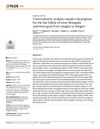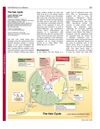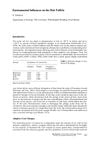Shedding Light on Cashmere Goat Hair Follicle Biology: From Morphology Analyses to Transcriptomic Landscape
July 2020
in “
BMC genomics
”
hair follicle anagen catagen differentially expressed genes DEGs Gene Ontology estrogen stem cell pluripotency thermogenesis fatty acid metabolism RT-qPCR Ceruloplasmin Keratin 4 growth phase regression phase gene expression GO analysis hormone stem cells heat production fat metabolism real-time PCR CP K4
TLDR The research found genes that change during cashmere goat hair growth and could help determine the best time to harvest cashmere.
The study on cashmere goat hair follicle biology provided detailed insights into the genetic and molecular mechanisms underlying hair growth and development. Researchers conducted morphological analyses and transcriptomic profiling on isolated hair follicles from five Italian cashmere goats, identifying 214 differentially expressed genes and 144 significant pathways, including those related to estrogen signaling, thermogenesis, and fatty acid metabolism. Key genes such as Keratin 4 (K4) and Ceruloplasmin (CP) were highlighted as potential markers for hair follicle cycling. The findings offered potential targets for improving cashmere quality and contributed to a better understanding of hair follicle biology, with implications for both agricultural practices and the study of hair growth in other species.













